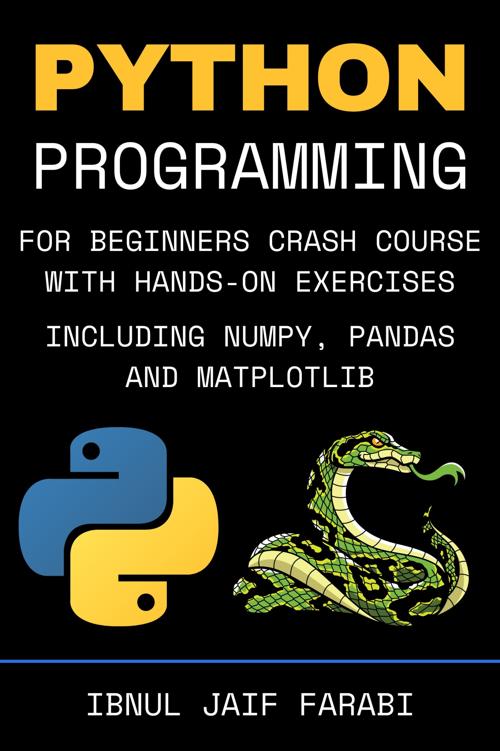

Most ebook files are in PDF format, so you can easily read them using various software such as Foxit Reader or directly on the Google Chrome browser.
Some ebook files are released by publishers in other formats such as .awz, .mobi, .epub, .fb2, etc. You may need to install specific software to read these formats on mobile/PC, such as Calibre.
Please read the tutorial at this link: https://ebookbell.com/faq
We offer FREE conversion to the popular formats you request; however, this may take some time. Therefore, right after payment, please email us, and we will try to provide the service as quickly as possible.
For some exceptional file formats or broken links (if any), please refrain from opening any disputes. Instead, email us first, and we will try to assist within a maximum of 6 hours.
EbookBell Team

4.7
96 reviewsAre you ready to start your path to becoming a Python programmer?
Are you looking for the best Python Crash Course to Learn Python Coding fast, simply and efficiently?
If yes, then this book is for you. This is one of the most comprehensive and straight-forward guides to master the Python programming language.
This book is designed for both beginners with little to no Python programming experience and experienced Python developers looking to make it into the world of Data Science!
This is a complete book for Python beginners with all the concepts and the opportunity to apply your knowledge thoroughly! Exercises and examples are included for learning the concepts fast and easily, as well as the results of the examples are also added.
This book is divided into 4 units.
In the first unit, we’ll study a brief introduction to Python programming language, including variables, user input, arithmetic operations, comparison and logical operators, decision making statements, loops, functions, lists, tuples and dictionary.
In the second unit, we’ll study NumPy, including NumPy arrays, different mathematical operations, array sorting, indexing and slicing techniques.
In the third unit, we’ll study Pandas, including Pandas series, DataFrame, operations, importing and exporting data.
In the fourth unit, we’ll study Matplotlib, including Matplotlib plots, markers, lines, grids, labels, subplots, scatter plots, bar graphs, histograms, and pie charts.
What are you waiting for? Start your Python journey today and let’s start coding!